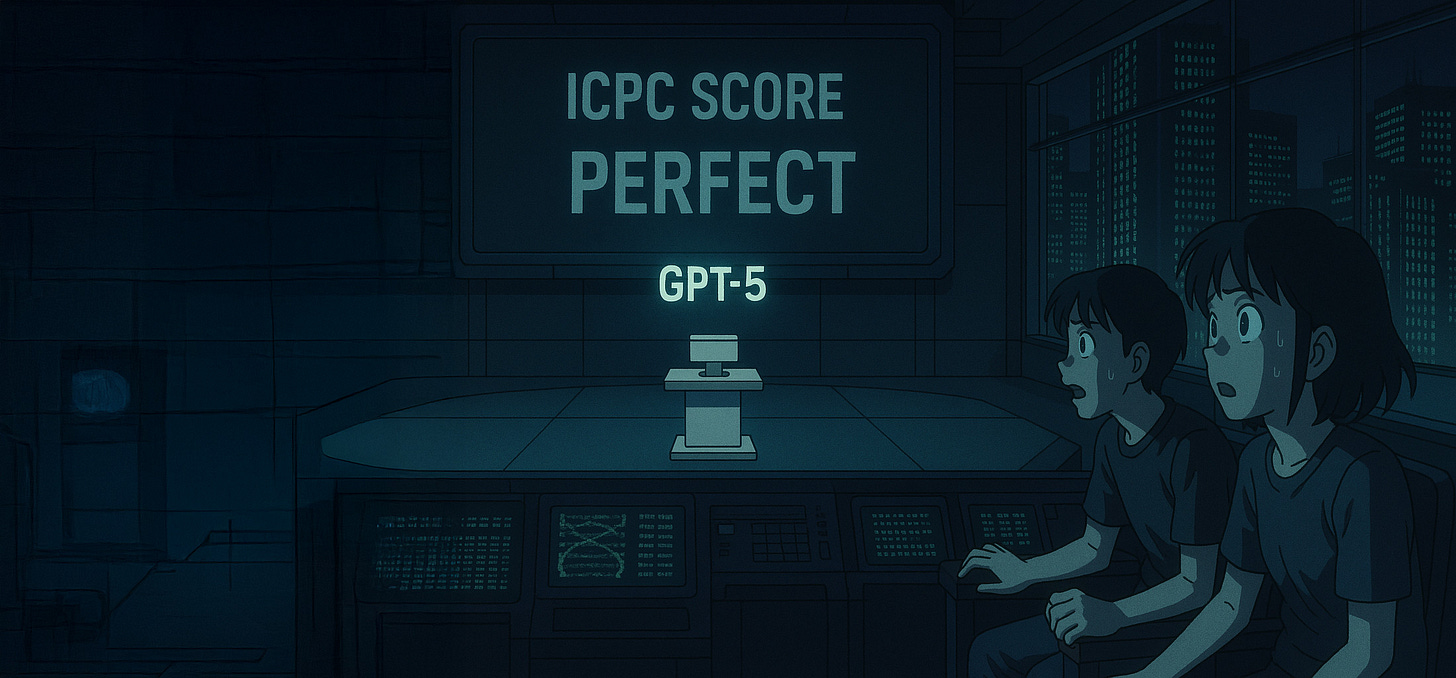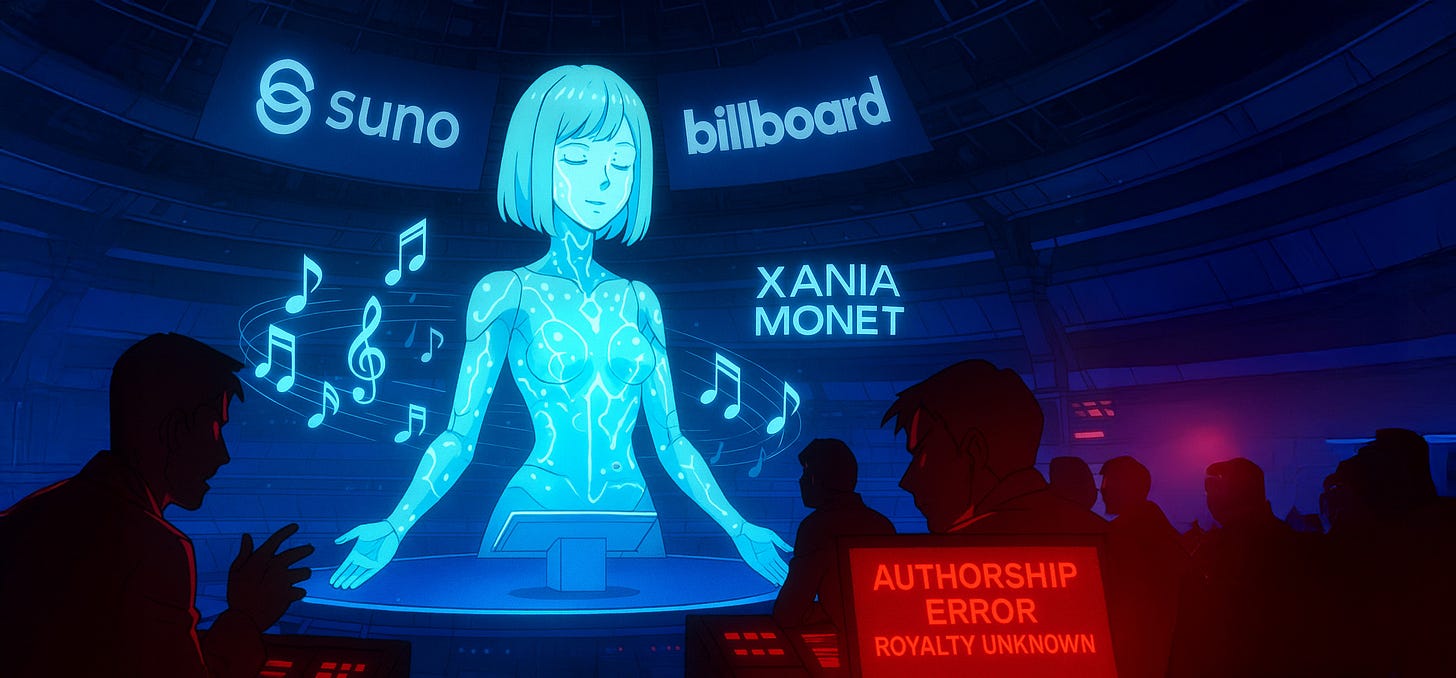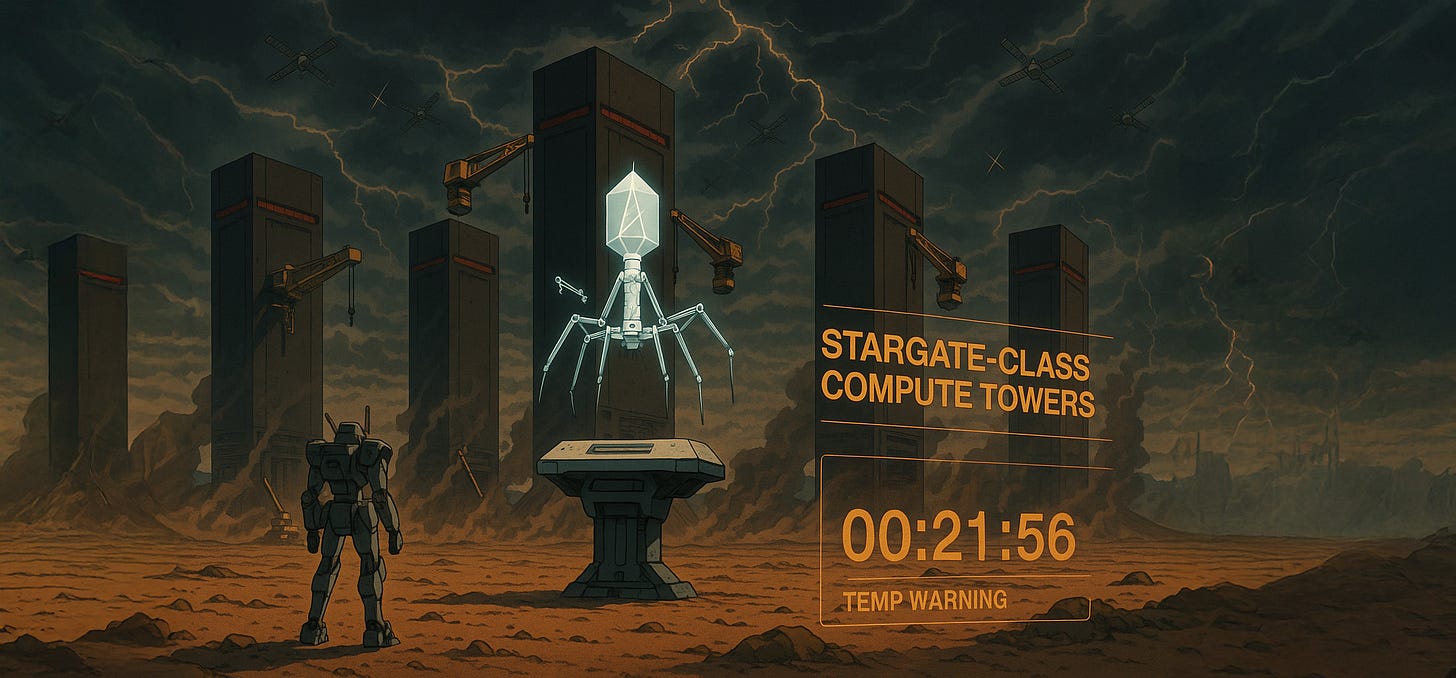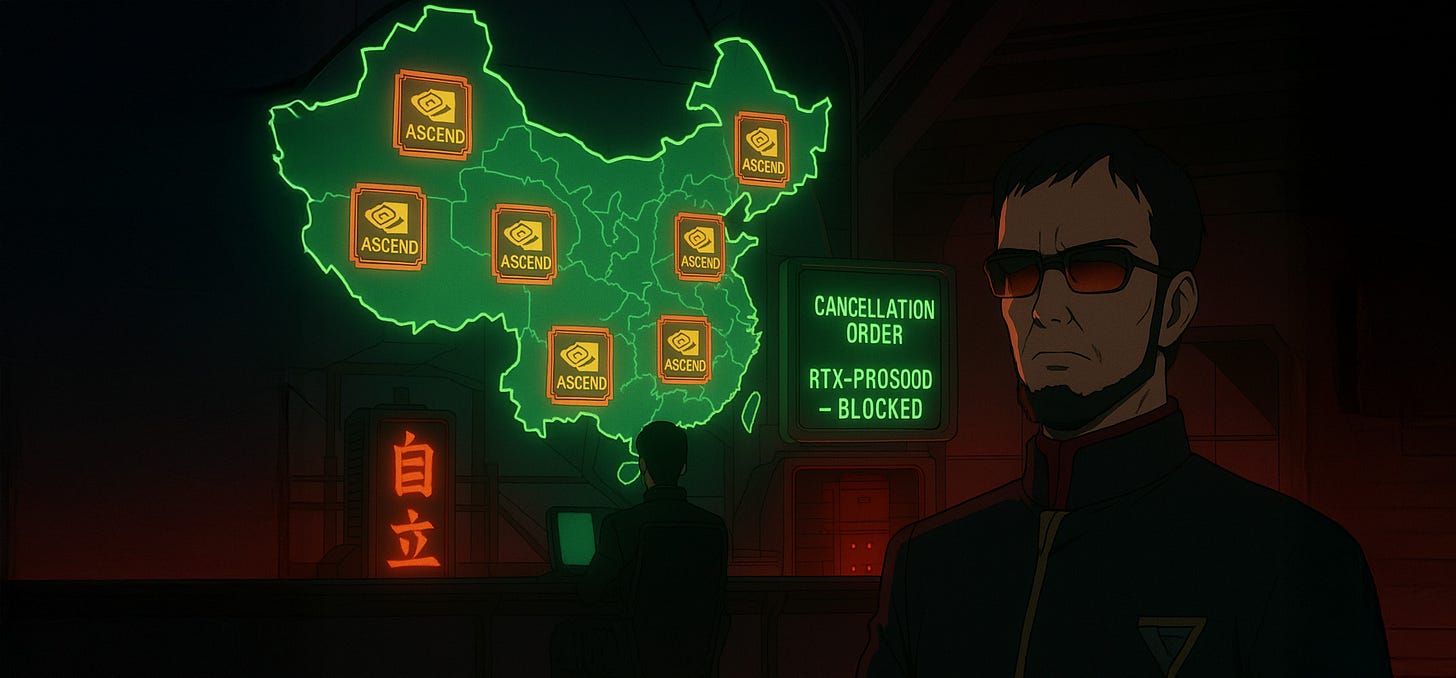🧬 AI Designs a Killer Virus, 👑 GPT-5 Beats Every Human, 🎤 Who Owns a Suno Hit?
This week: AI builds viruses, wins where humans can’t, and lands a record deal. Science fiction is becoming the weekly newsletter.
🎵 Podcast
Don’t feel like reading? Listen to it instead.
By the way, if you like the podcast. Please let me know (20 seconds).
📰 Latest News
AI just wrote a virus that kills E. coli
AI has just designed working viruses that kill bacteria. A Stanford–Arc Institute team used genome models called Evo to write complete bacteriophage genomes, then synthesised and tested them in the lab, where 16 of 302 designs infected and killed E. coli. The authors describe this as the first demonstration of an AI writing a coherent genome that functions in the real world, reported on 17 September 2025 as a preprint with Arc outlining the methods behind the “first AI-generated genomes.”
Why it Matters:
If this approach holds up under peer review and clinical scrutiny, hospitals could one day request targeted, fast-to-design phages for stubborn infections rather than relying solely on broad-spectrum antibiotics, which preserves healthy microbes and may outpace bacterial resistance. The same capability could reshape agriculture and biotech by turning bespoke antimicrobials from bespoke craft into repeatable design, while also forcing regulators to grapple with new biosecurity questions, since the power to design functional genomes is moving from theory to practice. For now it remains an early research result, but it signals a shift from reading and editing DNA to designing it, with direct consequences for how quickly society can respond to drug-resistant disease and how carefully we govern that power.
No team has ever done it. But GPT-5 did
OpenAI’s GPT-5 achieved a perfect score at the 2025 ICPC World Finals, solving every problem in the contest—a feat no human or team had accomplished in this setting. The model was tested in the official competition environment, using the same problem set as human participants. This result was confirmed in September 2025, but public access to this version remains restricted to research partnerships and internal evaluations.
Why it Matters:
Automated systems powered by GPT-5 can now surpass top human programmers in coding competitions that demand creativity, mathematical reasoning and sustained problem-solving. For software teams, this means AI tools could reliably handle complex development tasks with fewer errors, changing workflows for team leads and individual contributors. For the competitive programming community, the benchmark for performance and training will need to adapt, as AI becomes not just an assistant but the standard for top-tier problem solving.
If Suno wrote the hooks, who gets the royalties?
Xania Monet, an AI music artist, signed a $3 million deal in September 2025, quickly reaching the Billboard charts. This event became controversial due to debate over the music’s production, as it was reportedly created using Suno, an AI music generation tool. The deal and Billboard recognition happened in the United States and drew attention across the global music and AI technology sectors.
Why it Matters:
This marks one of the first instances where an AI-generated artist receives a major industry contract and mainstream chart placement. It challenges current music industry standards on authorship, royalties, and eligibility for charting. Artists, labels, and chart authorities may need to revise policies regarding AI-generated content. The visibility of Suno’s role raises questions about transparency and credit in creative work, which could affect how AI tools are adopted and regulated within music production and distribution.
Five new Stargates, a $100 billion bet on compute
A once-in-a-generation AI build-out is taking shape. Nvidia will invest up to $100 billion in OpenAI and supply next-gen “Vera Rubin” systems, while OpenAI, Oracle and SoftBank are adding five new U.S. “Stargate” sites toward a 10-gigawatt footprint, with first gigawatt-scale capacity slated for the second half of 2026. Nvidia has also previewed Rubin CPX hardware aimed at long-context workloads like code reasoning and video, signalling the class of chips these campuses intend to run. Locations named so far include counties in Texas, New Mexico and Ohio, plus an additional Midwest site.
Why it Matters:
This project will make high-capacity data infrastructure more widely available for AI developers and enterprises, enabling larger models and faster training cycles. Teams using advanced AI systems could see improved reliability and access to more computing power. The new centres may help shift competitive dynamics in cloud services by lessening reliance on existing providers, and facilitate global AI adoption for businesses that require extensive resources for machine learning and generative models.
Beijing just told Big Tech to stop buying Nvidia
Beijing has told ByteDance, Alibaba and other tech giants to cancel orders for and stop testing Nvidia’s China-only RTX Pro 6000D, effectively shutting off fresh Nvidia AI chips from inside China as of mid-September 2025. This is a domestically imposed restriction rather than a U.S. export move and it lands alongside official signals of “maintaining dialogue” to keep supply chains steady.
Why it Matters:
This is the practical start of a two-track AI compute world. Chinese platforms will lean harder into homegrown accelerators like Huawei’s Ascend and local cloud stacks, which means near-term friction as systems are retooled and product rollouts inside China slow, even as non-Chinese rivals keep advancing on Nvidia’s latest platforms. Over the medium term it concentrates investment, talent and data gravity around a domestic ecosystem that reduces exposure to foreign policy shocks while pressuring Nvidia’s China revenue and reshaping where new AI features appear first.







